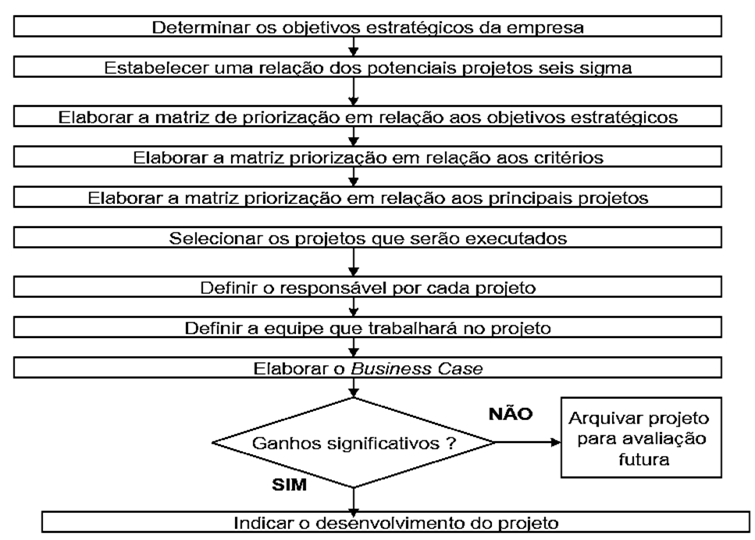SKEDSOFT
Introduction: Selection process in six-sigma is intended to establish a context for the current quality and six sigma movements.
Selection process:
According to Pyzdek (2003), Arthur (2000), Adams et al. (2003), Basu (2003), Pande et al. (2001), Rotandaro (2002), Eckes (2001) and Snee and Rodenbaugh (2002), the selection of Six-Sigma projects is pivotal to the success of the Six Sigma program, since well selected projects will contribute to the success and consolidation of Six Sigma culture within the company. Figure shows the selection process of projects according to Werkema (2004).

Proposal of a model for strategic alignment of Six Sigma Projects:
1. According to Santos and Martins (2005), the Six Sigma program has gained ground in organizations as a quality program that promotes the level of organizational performance and is therefore increasingly inserted in the strategic plan of organizations, establishing a link with the infrastructure that an organization has to measure performance.
2. This often results in the program’s poor use, since any problem that may arise turns into a Six Sigma project, given that these problems could be solved with a simpler methodology.
3. To properly select the critical processes in need of improvement, in order to reach high organizational performance, is one of the primary challenges of Six Sigma (SANTOS; MARTINS, 2005).
4. Since the alignment is a key factor in the consistency of the proposals and actions given the improvement initiatives, the Six Sigma program is a catalyst for this alignment, since it is a strategic program that promotes the improvement of the entire business from the achievement of strategic objectives.
5. The selection and prioritization process of Six Sigma projects is directly related to alignment, that is, selecting the projects directs the improvement strength towards the company’s critical processes.